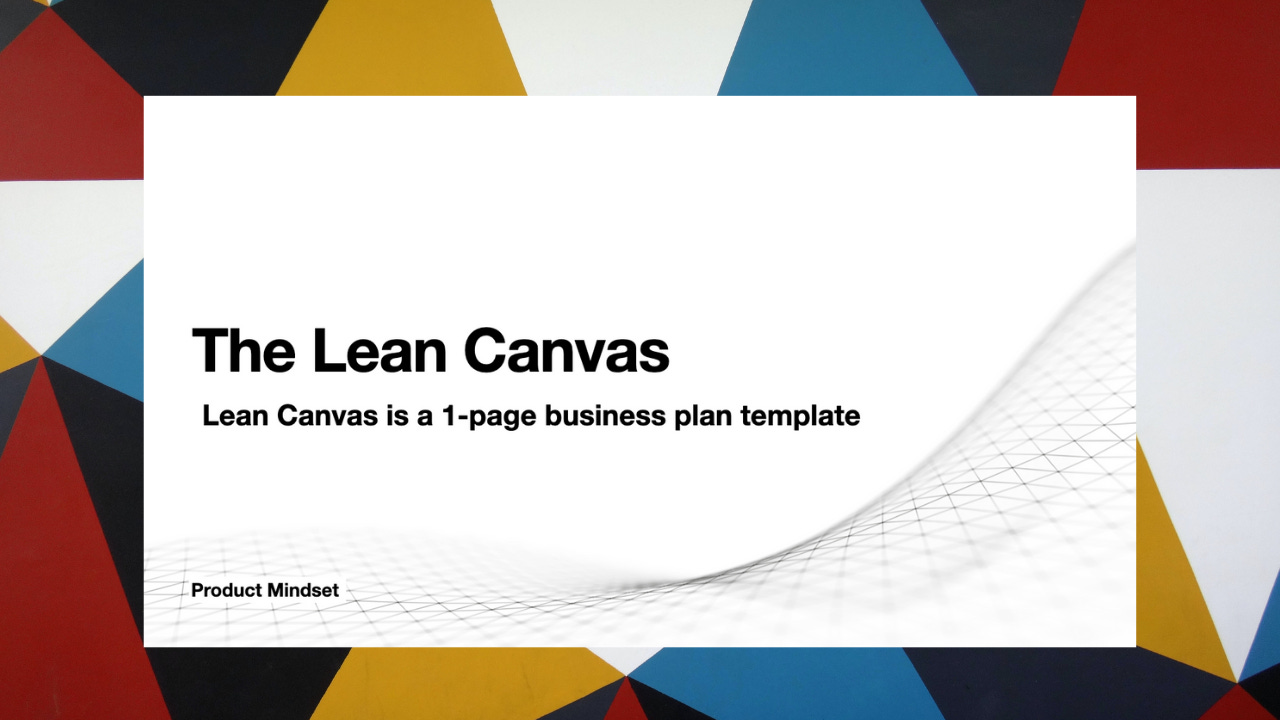✅ The Lean Canvas
📥 Download free template
What is a lean canvas?
A lean canvas is a 1-page business model template invented by Ash Maurya to provide a simpler, more straightforward way of evaluating a business opportunity. It’s a simplified version of the business model canvas template and helps your team break down your idea into assumptions, replacing cumbersome, time-consuming business plans.
Benefits of lean canvassing
A lean canvas is an easy way to brainstorm the various factors at play in determining potential profitability in an industry.
Simple to complete one of the big advantages of lean canvassing is that, unlike many other tools of business analysis, it’s very simple and low-cost to do one. The most important thing is that you bring in all the relevant parties in your business to inform each step of the canvas.
Gives a good high-level overview of your business it’s easy to get caught up in the day-to-day minutia of running a business and lose sight of the overall picture and goals. A Lean canvas keeps you focused on overall strategy, and on potential threats and opportunities to your business.
Incorporates internal and external factors lean canvassing not only explores the internal strengths of your business, but also potential external threats and factors that may affect profitability. You can use it, then, to improve and update internal processes in accordance with external factors.
When to use the lean canvas technique
If you’re an entrepreneur with an idea for an emerging business, you can use lean canvas to visualize your ideas and see the big picture. You can use it whenever you and your team are brainstorming new ideas and business models.
Lean canvas allows you to clarify the essence of your product and easily communicate it with others. Lean canvas saves time because your team isn’t getting bogged down by writing extensive business plans.
How to create a lean canvas
A lean canvas consists of a series of boxes you must fill out to complete the plan. Go through each prompt in turn, doing your best to articulate the answers in a simple, straightforward way. Don’t be afraid to iterate on your lean canvas.
Begin by selecting this Lean Canvas template. You can customize any of these sections, adding or changing them as necessary. You can fill out the blocks with sticky notes, links, and other file types such as photos, videos, and PDFs. You can easily share your board with others and invite them to collaborate with you.
Step 1: Problem the first question to ask: what problem does your product or service seek to solve? How common is this problem, how many people have it? How much would people be willing to pay to fix this problem?
Step 2: Solution what top three features does your product or service have, that work toward solving the problem? Are there other businesses out there with a similar solution?
Step 3: Key metrics what are the indicators you can use to determine whether your product or service is working correctly and your business is succeeding? Your key metrics can be a mix of engagement statistics, revenue, and customer satisfaction scores.
Step 4: Cost structure list all operational costs here. What is the cost of customer acquisition? What about distribution cost? Identify key partners in your venture and look up costs of potential suppliers or manufacturing, shipping, and other logistical issues to get at the true cost of operating.
Step 5: Unique value proposition what are you bringing to the table that your competition is not? How many competitors in this space are there, and what can you do to separate your business from theirs?
Step 6: Unfair advantage how can you ensure that your product or service cannot be copied? What steps are you taking to ensure your maintain a competitive advantage?
Step 7: Customer segments who are your prospects and how do they connect to the problem? In this step, you should identify specific personas among your potential customer base, how they perceive the problem you’re solving, and the unique value prop you can offer.
Step 8: Channels what paths do you need to take to reach customers? Understanding your customer segments is critical to informing this step. Know where your audience is and you can know how to reach them: over social media, content marketing, billboards, etc.
Step 9: Revenue streams what is your revenue model? Gross margins? Lifetime value of your product or service? Make sure not just to model how much you will earn initially, but recurring revenue and how much value you expect to generate from each customer over time.
Step 10: Review step back and consider everything you’ve mapped, and share with your team for alignment. Use all of this information to spot weaknesses and strengths in your business, and to hone in on your overall strategy.


